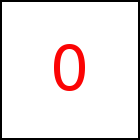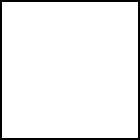Create Parallax Scrolling Web Sites with 3D Hardware Acceleration and WebGL™
Parallax scrolling adds a 3D effect to websites by scrolling objects
that are further away slower than objects in front. This mimics
a well-known optical effect: When looking out of a travelling car, objects
further away appear to move slowly while objects nearby move fast.
(See simple
example 2
and example 4
and full size taccgl.org home page. )
Most parallax scrolling web sites are implemented using javaScript
and CSS, although most computers have full scale 3D hardware graphic
acceleration. This article describes, how to build parallax scrolling
websites with full 3D hardware acceleration (WebGL™).
This not only shows the parallax effect perspecivly
correct but also enables many
other 3D effects, like rotating
(example 7),
3D objects
(example 5),
simulating of light sources, or shadows
(example 4).
Often the term "parallax scrolling" is generalized to arbitrary animations playing
while scrolling, e.g.
example 8 and
example 9.
Basic Idea and first Example
Key idea is to see a web page as 3 dimensional scene wherein the
background is behind the normal text, further away from the user's eye
than the text. In the
Example 1
we do so by drawing the background
image with 3D support (WebGL™) 1000 pixels behind the text plane.
The idea is that this automatically makes the background scroll
more slowly than the text.
We add the following HTML code
<style > #bgDiv {position:relative; z‑index:‑10; overflow:hidden; margin‑left:0px; margin‑top:‑400px; } </style> <div id="bgDiv"> <img id="bgImg" src="/pic/CubeBack/CBUp.png"> </div> | |
which adds a background image with id="bgImg"
and (after including the taccgl™ library) javaScript code to the onload
routine of the page
taccgl.actor("bgImg") . posZ(1000, {t0:-100}). permanent() . start(); | |
which tells the 3D engine to show the
background image with id="bgImg" 1000 pixels behind the
normal text plane.
(Note that the image is encapsulated in a div with: - style overflow:hidden
to clip parts of the image in case it is wider than the window,
-
position:relative; z-index:-10 to place it behind other
elements and
- margin-top:-400px so that an upper part of
the image is initially hidden and revealed during parallax scroll).
Scrolling Eye Position
The second key ingredients is to tell the 3D graphic to move the
virtual user's eye when scrolling the page, which is the virtual
equivalent to the moving car:
taccgl.stdEye.parallax(1,3); | |
Here parameters say that the eye position moves in X direction
just as the scrolling while it move 3 times as fast in Y direction.
(Note that 3 is a rather high value useful for this first example,
further examples use factors much closer to 1).
Please feel free to have a look at the commented source code
of Example 1.
Compensating Perspective Moving
Perspective mapping moves an element that is virtually behind
the text plane from its normal position. The posZ
method used above automatically compensates that movement.
In order to do so, it needs to know the eye position, which we pass using the
{t0:0} parameter.
(As we have seen above with parallax scrolling the eye position is
not static but moving while scrolling. So we need to pick a specific
scroll position. The {t0:0} parameter specifies
the scroll position where the page has been scrolled upwards
so far that the background image hits the top of the window.
When the page is scrolled to that position, the parallax
scrolling background image appears at the position specified
by HTML/CSS. Before and after that scroll position the
image has a different position, which should be clear
since it scrolls more slowly than the rest of the page.)
Compensating Perspective Shrinking
By declaring the background image 1000 pixels behind
the text plane, the 3D engine will automatically shrink
the background image as appropriate for an object
that is further away.
This shrinking may or may not be useful, in our example it is not.
To avoid shrinking the background image is previously resized to
compensate for the shrinking.
In Example 2
we use the following code
taccgl.actor("bgImg") . posZ(5000). resizeZ(). permanent() . start(); taccgl.stdEye.parallax(1,1); | |
Now since there is no shrinking a distance of 5000 pixels (posZ(5000))
and a eye point that moves more slowly (parallax(1,1)) looks better.
Example 3
shows some more elements using various distance and consequently scrolling
at different speeds. Some compensate for the shrinking while others
do not.
Shadows
In Example 3
you might have noticed, that the 3D engine automatically
shows shadows casted from the scrolled elements on the background
image. Shadows are useful to intensify the 3D experience.
They can of course be disabled if desired.
Not all 3D engines have enough performance to show shadows,
so it is possible that you cannot see shadows on a slow device.
The 3D engine simulates a virtual light source. It calculates, if
there is an object between the light source and a given pixel. If
so, the pixel is shown darker to display the shadow. This all takes
place automatically, only the position of the light source needs to
be specified. Per default it is 5000 pixels in
front of the text and 200 pixels left and above the top left of the
text. In the examples we use
taccgl.stdLight.parallaxPos(1, 1.2); | |
to move the light source down while scrolling. The factor of 1.2
in y-direction makes the light source move a bit faster than the eye
position and so the shadows move during scrolling.
Example 4
shows an additional element in front of the text that,
depending on scroll position casts a shadow partly on the
text and partly on the background.
3D Hardware Acceleration, Shading, and 3D Objects
3D engines as contained in current GPUs provide many more 3D
features such as depth buffering and shading. Depth
buffering correctly displays surfaces hidden (even partially) behind
other objects or elements. In contrast to classical implementations of
parallax scrolling this allows for arbitrarily rotated elements.
Shading calculates the lighting of each pixel of each element
and can so more realistically display rotated elements and
curved surfaces, since in reality pixels directly facing a light source
appear brighter than pixels rotated away.
All together these features make it possible to show 3D objects
and scenes that were previously designed with a 3D modelling program.
These objects can so be integrated in a web page and via
parallax scrolling viewn from different angles, see
Example 5.
Scrollable Animations
Sometimes the term "Parallax-Scrolling" is used for
arbitrary animations playing while scrolling down. Hereby a classical
animation uses instead of the usual time parameter the scroll
position.
In fact all taccgl™ transitions, which normally play from a given
startTime for a given duration
(see First Example for the normal operation) can also
programmed to play from a given scroll position
(startScroll) for a given scroll distance.
Example 6
uses code similar to the following example to fade out a text block while scrolling down.
taccgl.actor("textBlock1") . blend(1,0,0,0) . castShadow(false) . startScroll(0) . distance(500) . start() | |
Example 7
performs a rotation animation instead.
Example 8
shows animations splitting HTML elements into parts
and example 9
animations bending and morphing HTML elements.
Conclusion
The article described the advantages of implementing parallax scrolling web sites
using hardware 3D acceleration via WebGL™ using
the taccgl™ library.
To see some more elaborate examples we refer to
the taccgl™ Home Page.
In order to get a complete understanding of the examples shown
in here, see the taccgl™ Tutorial
and then the taccgl™ Manual.
WebGL™ is a trademark of the Khronos Group Inc.
| 




